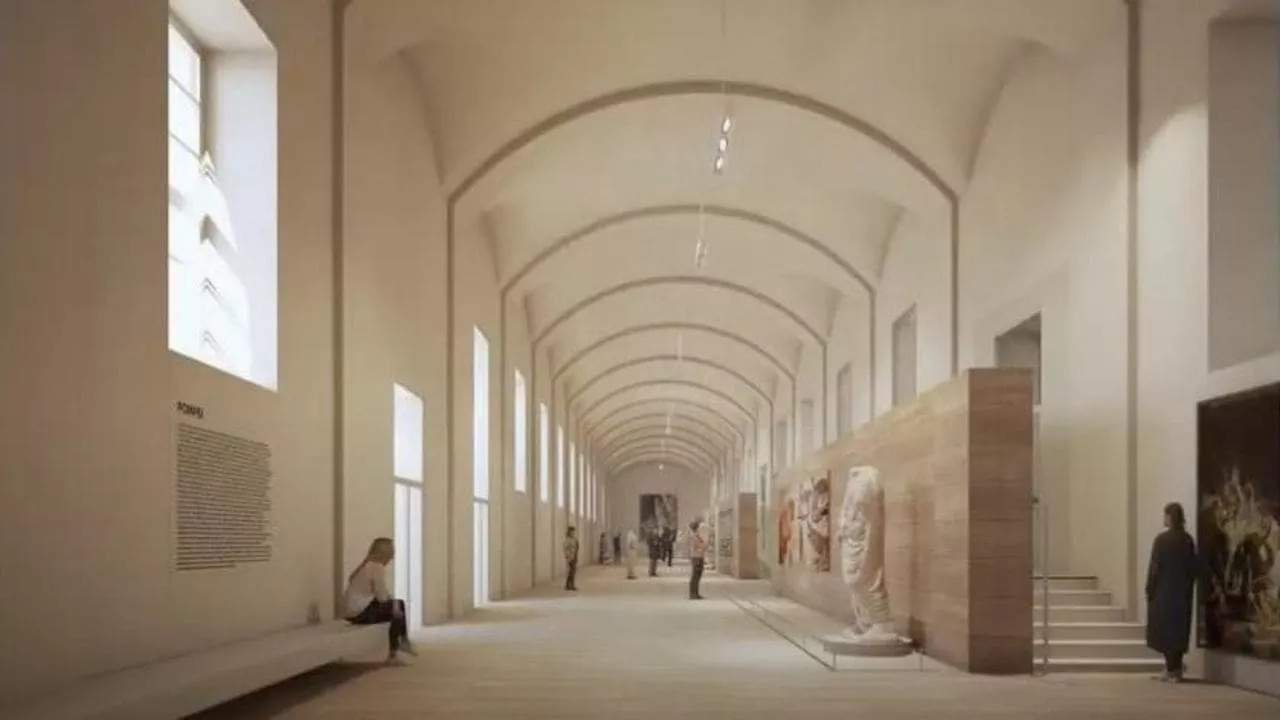The Real Albergo dei Poveri in Naples, also known as Palazzo Fuga, will house many artifacts from the storage rooms of the Mann-National Archaeological Museum, which are therefore not accessible to the public now. This was announced, as Repubblica reports, by the director general of Museums of the Ministry of Culture Massimo Osanna during the conference Allestire l’archeologia. Current Projects and New Proposals for National Museums and Archaeological Parks, which was held in Rome on Feb. 26 and 27, 2024, to illustrate and discuss about forty projects designed to build ex novo or renovate the layouts of as many museums and national archaeological parks throughout Italy.
“In Palazzo Fuga we do not want to replicate a collection already well told in the Mann itself: rather, we are going to create a place dedicated to the history of the rediscovery of the Vesuvian sites, through artifacts, but also reconstructions, panels and multimedia supports,” Osanna said.
A second Mann headquarters will be created, occupying two wings of the Real Albergo dei Poveri, half of the front and the left side; it will cover more than eight thousand square meters, and will have at least twenty rooms, a bookshop, a café and a panoramic terrace on the fifth floor. There will be seven museum sections: Discovery, Vesuvian Excavations (divided into the additional sections Pre-unit, Post-unit, 1964 to the present), Daily Life and Tragedy, and Paper Pompeii.
“We will start by digitally re-presenting,” Osanna explains, “the Vesuvian eruption of 79 A.D.” “The aim is not only to excite visitors, but to make them understand how much the Campanian landscape changed after an event of such magnitude.” “In the adjoining rooms,” the director-general continues, “we will place real eruptive materials, piles of lapilli, to highlight the second life of Pompeii, the hidden and underground one, the one of looting, until the start of the Herculaneum excavations. First the unofficial ones with the Count d’Elboeuf in 1709; then the systematic ones, wanted by King Charles of Bourbon in 1738 and entrusted to Roque Joaquín de Alcubierre in 1738.”
People will then walk through the multimedia reconstruction of a Bourbon burrow and entire buildings will be reconstructed, complete with all the decorations, from the House of the Citarista to that of the Tragic Poet, to the Temple of Isis. Part of the rooms will also be dedicated to the great archaeologists of the past, such as Giuseppe Fiorelli, Vittorio Spinazzola, and Amedeo Maiuri.
There will also be a “contemporary” space, dedicated to images related to the allied bombing of the city in 1943, up to the crisis of the 1990s and 2000s, and the rebirth with the “Great Pompeii Project.” “Alongside these areas,” Osanna points out, “we will arrange in a room extending over 600 square meters, a series of objects related to daily life, from household furnishings and keys to the small bundles of gold and silver that people, surprised by the eruption, hastily tried to take away.”
Finally, the paper Pompeii section will contain all the literary and scientific publications and inscriptions from Pompeii, displayed “as in a Baroque picture gallery.”
The project, designed by architect Paolo Desideri, is part of the Memorandum of Understanding signed by the City of Naples with the Ministry of Culture and funded for 158 million euros. Work is scheduled to be completed by mid-2026.
Pictured is the rendering.
 |
| Naples, the Real Albergo dei Poveri will host a second home for the Mann: it will display artifacts from its storerooms |
Warning: the translation into English of the original Italian article was created using automatic tools. We undertake to review all articles, but we do not guarantee the total absence of inaccuracies in the translation due to the program. You can find the original by clicking on the ITA button. If you find any mistake,please contact us.